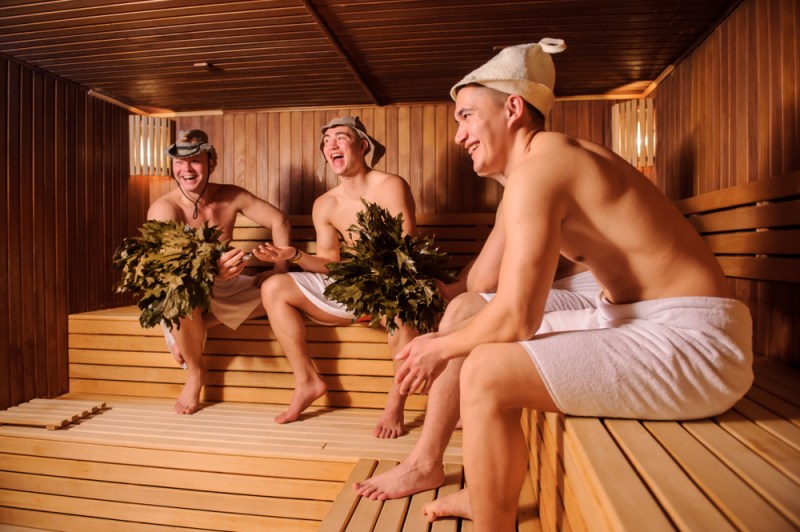
The allure of a home sauna is undeniable — the promise of relaxation, the health benefits, and the luxurious escape right within the confines of your own home. However, as with any home improvement project, the initial price tag doesn’t always tell the whole story. Beyond the initial investment, there are several hidden costs associated with installing a sauna that homeowners should consider. We will uncover the often-overlooked expenses that come with bringing the soothing embrace of a sauna to your home.

The hidden costs of installing a sauna
According to HomeGuide, it costs about $3,000 to $10,000 on average to install a home sauna. After that, it ranges on average from $150 to $600 per year to maintain. Here are a few hidden costs to be aware of as you start the installation process.
Electrical upgrades
Saunas require dedicated electrical circuits to handle the high power needs of the heating elements. If your existing electrical system can’t handle this demand, you might need to upgrade your electrical panel or wiring. This can be a substantial additional cost, especially if your home’s electrical infrastructure is outdated. Every sauna’s electrical needs are different, so consult your sauna’s manuals or manufacturer.
Running costs
Electric and infrared saunas can consume a significant amount of electricity, and traditional wood-burning ones consume quite a bit of firewood. Modern units are actually very energy efficient, but the cost of operating the sauna regularly can add up over time. Infrared saunas are generally more energy efficient, but it’s still a good idea to consider the impact on your monthly utility bill.
For those who opt for steam saunas, there’s an additional hidden cost — water usage. Steam saunas require a consistent supply of water to create steam, and the cost of water usage might increase noticeably if you use your sauna frequently. Moreover, excess moisture from steam saunas can contribute to higher humidity levels in your home, potentially leading to other hidden costs, such as increased cooling expenses during the warmer months.
Ventilation
Proper ventilation is crucial in saunas to ensure air circulation and prevent moisture buildup. Installing an effective ventilation system that removes excess heat and humidity while supplying fresh air can be expensive. Inadequate ventilation can lead to mold growth, structural damage, and health risks. Ignoring these factors can result in long-term maintenance costs. In some cases, you may need to install additional ventilation systems or fans, which could add to the overall cost.
Maintenance
Saunas require regular maintenance to keep them in good condition and extend their life span. This includes cleaning the interior, checking the heating elements, and inspecting the electrical components. Maintenance costs can include cleaning supplies and occasional repairs.
Accessories and add-ons
Some sauna owners may want to enhance their sauna experience with accessories. These additional features come at extra costs. While these extras can significantly enhance your sauna experience, they also come with additional costs that can impact your overall budget.
- Backrests and headrests. These ergonomic additions provide comfort while you relax in the sauna. While they may seem like small expenses individually, the costs can accumulate if you’re outfitting multiple sauna benches with backrests and headrests.
- Lighting upgrades. The right lighting can set the mood and ambiance in your sauna. Whether you’re looking for soothing, colored LED lights or dimmable options, investing in lighting upgrades can contribute to the overall aesthetic of your sauna but also add to your expenditure.
- Sound systems. Many homeowners enjoy listening to music, podcasts, or soothing sounds while they unwind in the sauna. Adding a sound system can be a delightful addition, but it also entails the cost of purchasing and installing the equipment. Some sauna kits come with a sound system, so if this is important for you, make sure you select one with this feature.
- Temperature and humidity sensors. For precise control over your sauna environment, temperature and humidity sensors can help you monitor and adjust conditions. These sensors can be valuable for maintaining a consistent and comfortable sauna experience, but they come with an extra cost.
- Seating upgrades. Sauna benches can be upgraded with higher-quality materials or designs that match your aesthetic preferences. These upgrades can enhance comfort and aesthetics but may also come with additional expenses.
- Aromatherapy dispensers. Aromatherapy is a popular addition to saunas, and some homeowners opt for automated aromatherapy dispensers, which can be an additional cost. For those purchasing a traditional or electric sauna, special essential oils can be placed in the water-throwing buckets for a similar effect.
- Towel racks and storage. Convenience is key in a sauna, and adding towel racks, hooks, or storage compartments can make your experience more enjoyable. While seemingly small, these additions can still contribute to the overall cost.
Permits and regulations
Depending on your location and the type of sauna you’re installing, you might need to obtain permits or comply with specific building codes and regulations. This could entail extra paperwork and fees. Check with your local authorities for specific information regarding any permits or regulations.
Upgrading amenities
As you spend more time in your sauna, you might consider upgrading other amenities in your relaxation space, such as changing rooms, showers, or additional seating areas. These improvements can add to the overall cost.

Concluding thoughts
The allure of a personal sauna and the sauna benefits can be intoxicating, but it’s essential to go into the endeavor with your eyes wide open. Beyond the initial installation cost, the hidden expenses associated with constructing, maintaining, and operating a home sauna can add up significantly. Homeowners should carefully evaluate their budget, do thorough research, and consult with professionals to ensure they are fully aware of the potential costs involved. While the relaxation and wellness benefits of a sauna are undoubtedly appealing, understanding the complete picture will help you make an informed decision about whether a home sauna is the right investment for you.



